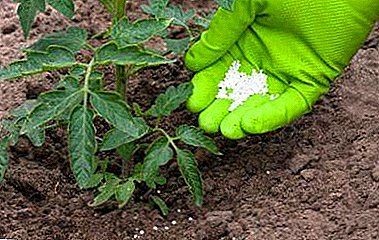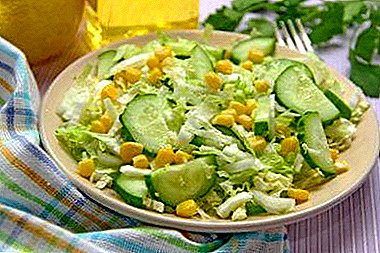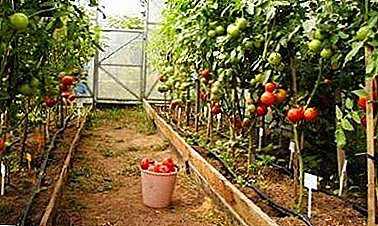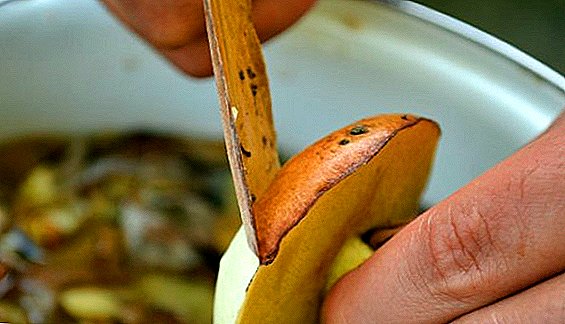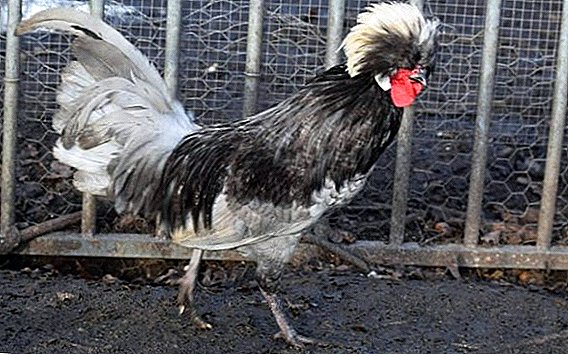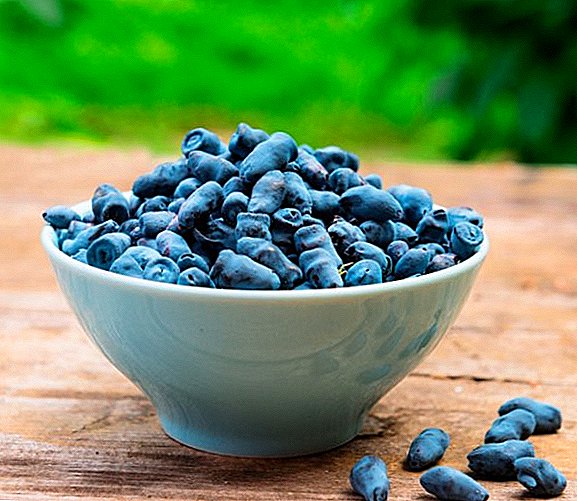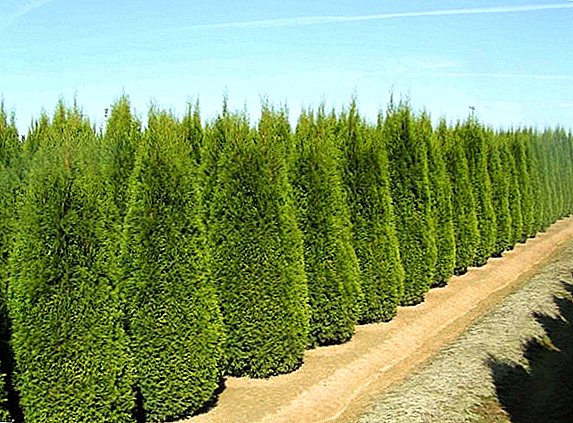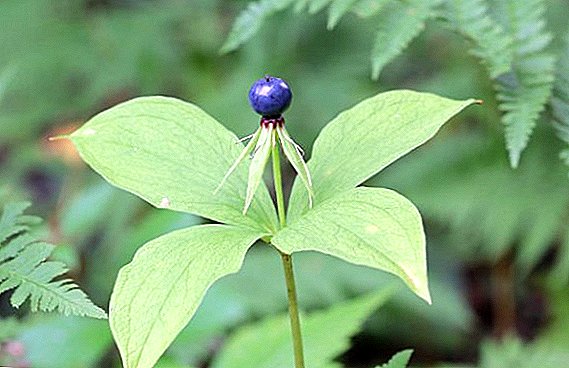 Crow's eye is known as a poisonous plant, from which it is better to stay away, and only a few know that it has the ability to heal many ailments.
Crow's eye is known as a poisonous plant, from which it is better to stay away, and only a few know that it has the ability to heal many ailments.
In our article we will tell you what a crow's eye looks like and where it can be found, and also list its useful and dangerous properties.
Why is it called
The plant owes its name to the appearance of the fruit: it is blue-black and resembles the eye of a raven in a frame of tepals.
The Latin name of the plant is Paris quadricfolia, in honor of the hero of the ancient Greek myths Paris, who kidnapped Helen the Beautiful, thereby unleashing the Trojan War. 
Did you know? Crow's eye was previously considered magical and was used in witchcraft and conspiracy.
This plant is well known and has a lot of popular names: wolf berries, raven, polisthen, cuckoo tears, quick grass.
What a raven eye looks like: a botanical description
This is a perennial herbaceous poisonous plant. The stem is straight, from 10 to 50 cm in height. The leaves are broad, in the shape of an ellipse with pointed ends, up to 10 cm long, located at the top of the stem.
Flowering occurs in May-June with single flowers of yellowish-green color. The fruit is a black and blue berry with a few seeds, which ripens from late July to early August.
Check out a dozen of popular useful plants.
During frosts, the above-ground portion dies; only the rhizome remains, which will give spring new shoots. Reproduction occurs with the help of seeds and rhizome growth. 
Where the crow's eye grows
The habitats of the crow's eye are the fertile lands of deciduous and coniferous forests. He prefers areas with moist soil and rarely penetrating the sun's rays, and therefore grows among shrubs and on the banks of rivers.
This herb is widespread in the Caucasus, in Belarus, Ukraine, central Russia.
Chemical composition
In the berries and roots of plants high content of poison - paristifina and paradine, the least poisonous leaves.
Among the safe substances in its composition can be identified:
- glycosides;
- alkaloids;
- flavonoids;
- steroids;
- saponins;
- pectins;
- vitamin C;
- organic acids.

Use: medicinal properties
Although this herb is poisonous, a small amount of it can benefit a person.
Due to its chemical composition, it is capable of:
- act soothingly;
- remove spasms;
- heal wounds;
- remove inflammation;
- normalize the kidneys and intestines.
Medical applications
In official medicine, the crow's eye is recognized to contain poison and dangerous, its use for the manufacture of medicines is prohibited.
In folk - use its useful qualities, but with caution. Roots, leaves and berries are taken for decoctions with which they treat tuberculosis, migraine, neuralgia.
Find out what indoor plants can not grow at home.
 The plant is widely used in homeopathy. Of the above-ground parts of it are made preparations that treat headaches, inflammation of the larynx, conjunctivitis.
The plant is widely used in homeopathy. Of the above-ground parts of it are made preparations that treat headaches, inflammation of the larynx, conjunctivitis.
Important! Due to the toxicity of the crow's eye, treatment with it should be carried out only after consulting a doctor and strictly adhering to the dosage of the medicine.
What is the raven eye dangerous: harm
For humans, all parts of the plant are dangerous:
- juice irritates mucous membranes;
- berries adversely affect the work of the heart and blood vessels;
- leaves harm the nervous system;
- rhizome provokes nausea and vomiting.
You can also be poisoned if you do not comply with the dosages of medication, in the manufacture of which this poisonous plant was used. 
Symptoms of poisoning
Poisoning may be accompanied by the following symptoms:
- colicky pains;
- diarrhea;
- convulsions;
- sudden nausea and vomiting;
- heart rhythm disorder;
- migraine;
- paralysis.
At the first symptoms of poisoning the patient must be given first aid. We need to wash his stomach and give adsorbents. Intravenous anesthesin must be injected, and to restore the work of the heart - strophanthin. 
Important! In case of poisoning with a raven eye, drugs with a laxative effect are prohibited.
Contraindications
Preparations based on this poisonous plant are absolutely contraindicated:
- children under 12;
- women during pregnancy and lactation;
- people with impaired kidney and liver.
Harvesting and keeping a crow's eye
Crow's eye is a seasonal plant. Fresh it is used in the flowering period, which lasts from mid-May to mid-June.
For harvesting during flowering plants collect its leaves, stems and berries. They should be dried in the sun and stored in a suspended state in a dry dark place. 
Preparation of infusions and tinctures
When treating using traditional medicine methods, infusions and tinctures from this plant are widely used to help cope with various ailments.
Be careful of nature as you can be surrounded by dangerous, poisonous plants.
Tincture of leaves
Leaves make tincture suitable for the treatment of tuberculosis, constipation and neurosis.
The ingredients for it are simple: 50 g of dried or fresh leaves of the crow's eye and 500 g of alcohol. It is necessary to pour the raw material with alcohol and insist for 20 days in a dark cool place, after this period, strain.
Reception to carry out 3 times a day on 20 drops, diluting tincture with a small amount of water. The course of treatment should be no more than 14 days, then a break of at least 10 days is necessary. After this, the course may be repeated if necessary. 
Tincture of berries
In case of heart failure, a tincture of berries is well suited for treatment. For this you need the crow's eye berries (10 pieces) and vodka (500 ml). Insist berries on vodka for 15 days.
There are poisonous plants that are used in medicine. Among them: belladonna, buttercups, yew, horshevik, wolfberry.
Reception of the tincture should be carried out 3 times a day in 20 ml, diluting it with 50 ml of water. The maximum duration of taking this medication is 14 days, then you need a break of 10 days.
Did you know? Wildlife and domestic animals do not eat a crow's eye, but birds eat it without any harm to themselves.
Infusion of the collection
Conjunctivitis and blepharitis are treated using infusion from a collection for which the following plants are taken in equal parts:
- crow's eye;
- shoots open;
- blue cornflower;
- meadow geranium colors;
- bird cherry;
- meadow clover.
 Crow's eye is a poisonous plant, so it is important to know how to recognize it among others, deal with the symptoms of poisoning, and also how to use it for medical purposes. This plant must be used with caution, but with proper use it can help in the treatment of many ailments.
Crow's eye is a poisonous plant, so it is important to know how to recognize it among others, deal with the symptoms of poisoning, and also how to use it for medical purposes. This plant must be used with caution, but with proper use it can help in the treatment of many ailments.

